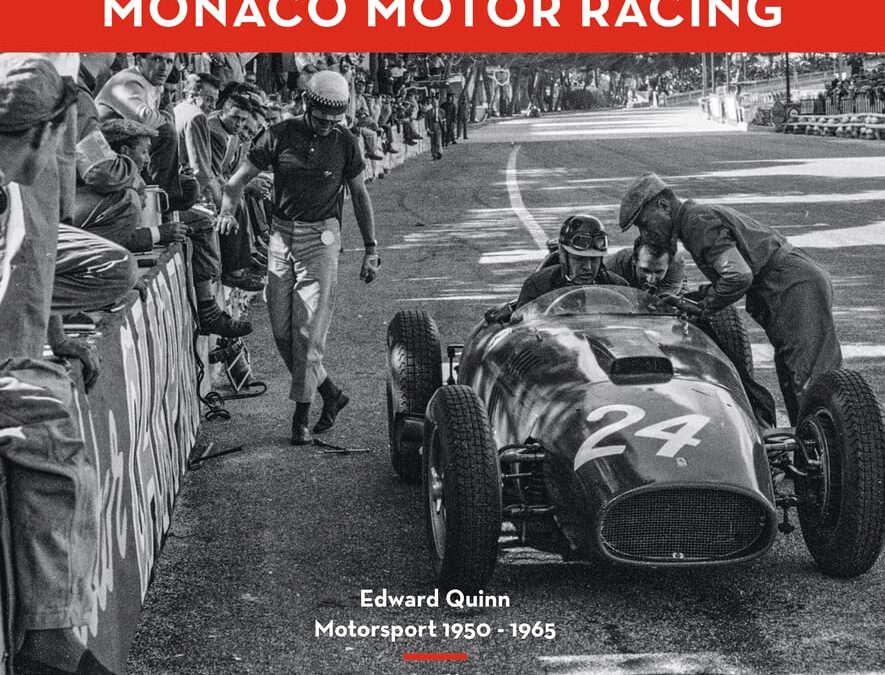
- Formula 1 of the 1950s and ’60s: images from a legendary era of motorsport
- Driver portraits, racing action and historic Formula 1 cars from Ferrari, Porsche, Alfa Romeo and Jaguar
- Over 270 photographs from Edward Quinn’s archive, some of which have never been published before
- Insights into post-war Monaco: lifestyle, glamor and celebrities
The Monaco Grand Prix is considered one of the most demanding races in Formula 1. Constant gear changes and the slowest corner in the world championship have always demanded everything from the racing drivers. Edward Quinn captured the most famous car race in the world from 1950 to 1965 in numerous photos. In his recordings, the well-known Formula 1 track is presented with almost no crash barriers and run-off zones, without advertising posters and sponsor logos. Many of his pictures are now combined for the first time in a large-format illustrated book. Accompanied by short descriptions and background information, they give a fascinating insight into the motorsport history of that time. Text in English and German.
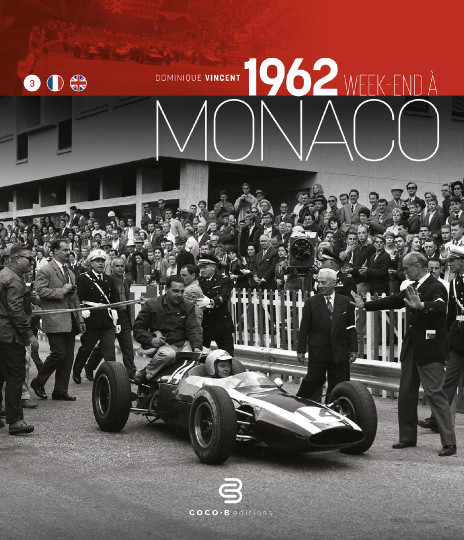
The story of a race – A race in history
This book is part of a new collection of books that unveils « freeze-frames » from the great movie of motor racing history. Its purpose is to explore a particular weekend, the choice of which depends above all on the authors’ ability to gather the most original and complete documentation possible: photos, plans, programs, drawings, period reports and testimonies.
All the historical disciplines are likely to be approached: F1, F2, F3, FJ, FF, sport-prototypes, GT, touring, cups of mark, rally, etc. If the program includes other events of a different nature (motorcycling, cycling…), they are reported with the same concern for precision.
The considerable preparatory work required to produce such works means that each author has had to rely on other contributors to benefit from the pooling of personal networks and rare documentary resources. It is thanks to their remarkable collaborative spirit that this project was possible.
An exceptional iconography at the service of the most prestigious F1 Grand Prix of the season, three Formula Junior races finally revealed thanks to unpublished documents, the presence of Clark, Brabham, Gurney, McLaren, G. Hill, P. Hill, Surtees, Bandini, Siffert and Trintignant at the wheel of the mythical Ferraris, Coopers, Lotuses, Porsches, BRMs and Lolas; the participation of the iconic Lotus 25 with monocoque chassis; these are just some of the ingredients of the spicy menu that we are proposing you to enjoy.
Text in English and French
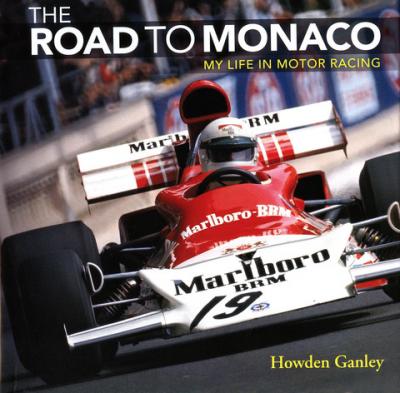
Howden raced cars at the highest level internationally at the apex of motor racing’s most glamorous and dangerous era-the 1960s and 70s, when Formula 1 drivers enjoyed rock star status, while driving in cars and on circuits that had virtually none of the safety features today’s drivers take for granted. Howden Ganley had 41 Formula One Championship Grand Prix starts during his career, competed in World Sports Car Racing finishing second in the Team Matra 1-2 finish at the 24 Hours of Le Mans in 1972.
Howden’s recently published his autobiography, The Road to Monaco, My Life in Motor Racing. The book is described as “a high octane ride through the precincts of the sport, from mechanics’ bay to test track, from drawing board to pattern shop, from start line to chequered flag. It is an exciting, absorbing and often wryly amusing view of motor racing, from the workshop, the pit wall, the cockpit, and many other vantage points.”
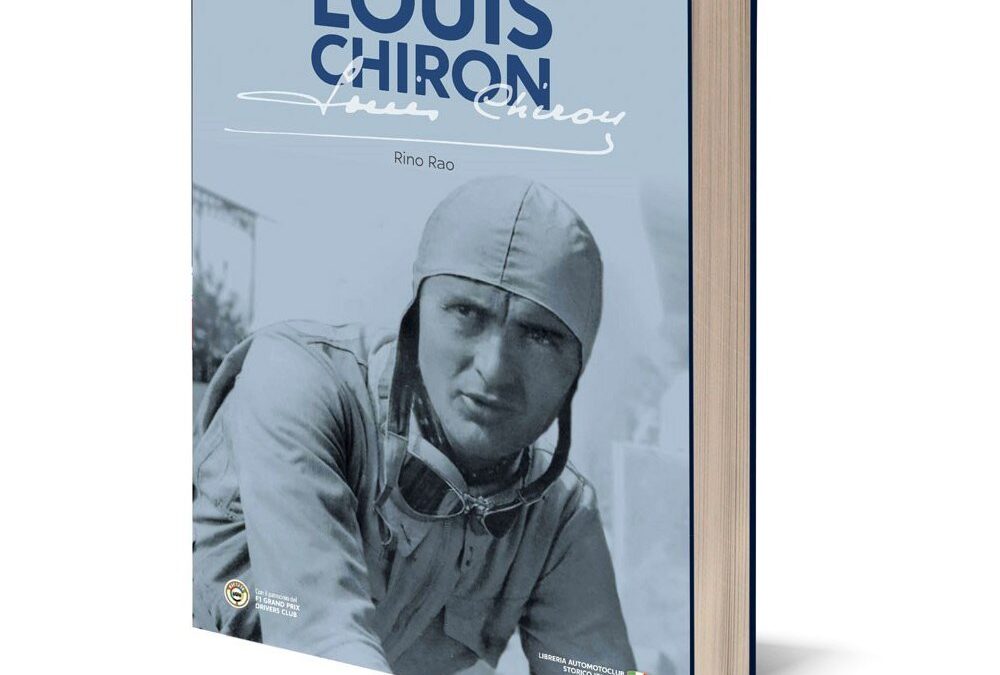
After the previous biographies “Giuseppe Campari – El Negher” and “Rudolf Caracciola – Una Vita per le Corse”, with this publication dedicated to Louis Chiron, the undisputed champion of Bugatti from Monaco and one of the greatest on the motorsport scene, Rino Rao completes the trilogy designed to provide motorsport enthusiasts with a history of Alfa Romeo, Mercedes and Bugatti for which they were respectively accredited testimonials: manufacturers that dominated the golden era of racing in the 1920s and 1930s.
The author has not neglected to place the sporting events in the broader historical context and customs in which they took place. The text, also prepared for quick reference through the analytical index and based on patient historic research, flows with images that make it possible, for the less attentive reader, to follow the course of events.
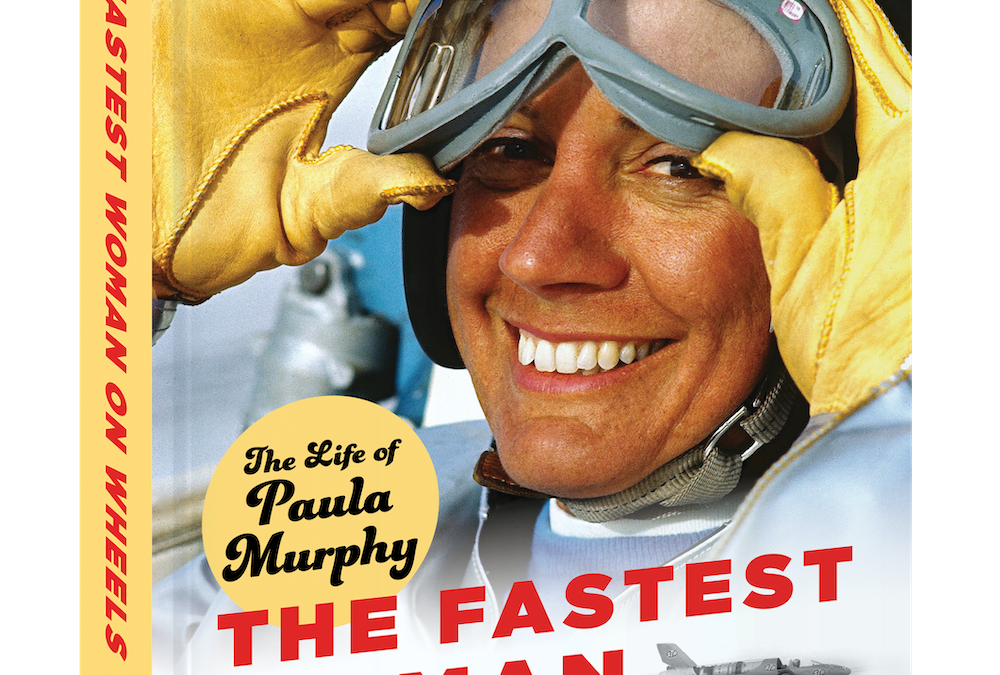
A fearless pioneer and a versatile and gifted driver, Paula Murphy was the first woman to pilot a jet car to a Bonneville Salt Flats speed record, the first woman to make laps at famed Indianapolis Motor Speedway, and the first woman to secure an NHRA Funny Car license. Throw in driving a Pontiac Sunbird literally around the world, nearly dying at the helm of a rocket car, and scoring closed-course speed records at NASCAR’s famed Talladega Superspeedway behind the wheel of cars driven by both Richard Petty and Fred Lorenzen, and you might be starting to scratch the surface of her incredible life.
Author Erik Arneson worked directly with Murphy and some of the biggest names in motor sports to dive deep into her story and relay to the world the impact this single mother from Ohio had on the world of racing. If you find the list of feats above impressive, add the Baja 1000, Mobil Economy Runs, Monaco, Union/Pure Oil Performance Trials, as well as high-speed stunts on horses, sailboats and a snowmobile and you’re starting to get close. Jump in—The Fastest Woman on Wheels is one hell of a ride.
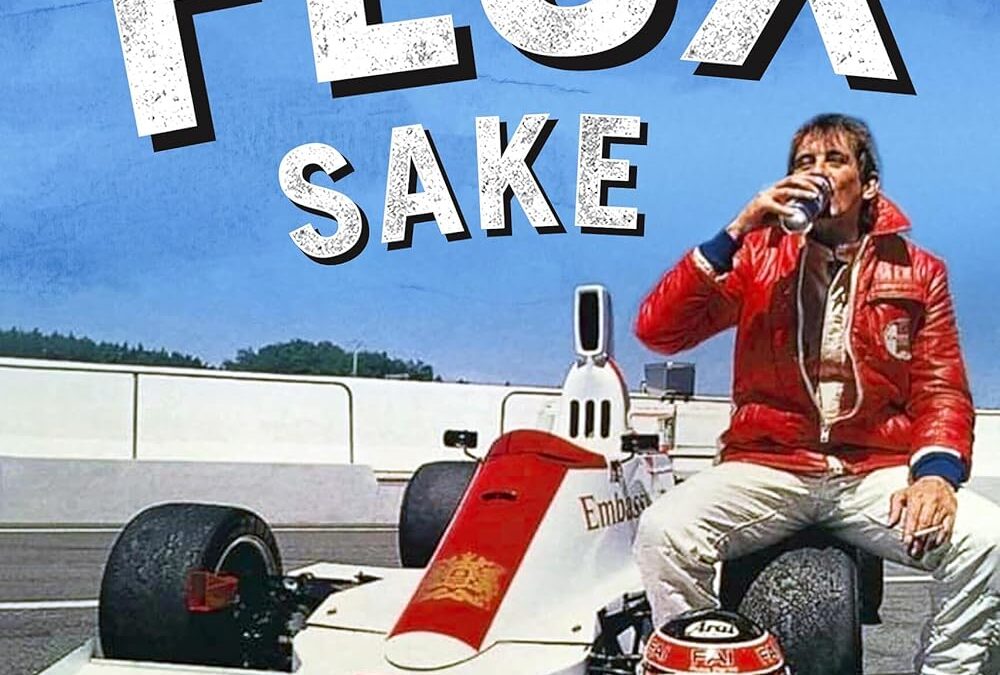
Contrary to popular belief, ‘Fluxie’ did not enter the world on full opposite-lock, nor did he have a cigarette in one hand and a pint in the other. Destined to race, he never got the biggest breaks but he did become one of motorsport’s most colourful and best-loved characters, someone who has always lived life to the full.
Ian Flux’s autobiography tells it how it was, covering not only the highs — including five championship titles — but also the many setbacks. Along the way we laugh with him about much of it, particularly the pranks, but also learn about some dark times that he has never previously divulged.
- Early days: growing up on a farm, first kart aged 6, muddling through in the classroom, lots of laughs — but also sexual abuse from a schoolmaster and an early racing mentor.
- The spark ignites: starting to race in 1970 with a Formula 6 kart, then onwards to Formula Vee; brushing shoulders with Formula 1 working for the Token and Graham Hill teams.
- Grabbing the chances: a Formula Vee title in 1975 leads to Formula 3 and Formula Atlantic, but still with various jobs to make ends meet, including as mechanic to motorcycle racing legend Giacomo Agostini for his four-wheel efforts.
- Diversifying into sports cars: successful adventures in Sports 2000 and Thundersports, winning championships in both, plus Thundersaloons.
- A true all-rounder: going into the British Touring Car Championship from 1988 in a wide range of tin-tops; racing a Jaguar XJR-15 in the big-money 1991 series held at Grand Prix races, including Monaco.
- Championship double in 1996: the ‘golden year’ in the TVR Tuscan Challenge and the British GT Championship, the latter with a McLaren F1 GTR.
- So much else: racing on into recent times, notching up nearly 50 years on track; testing competition cars for Motorsport News; driver tuition and track-day demonstrations.
This is a very different kind of racing driver’s memoir, with lots of laughs along the way together with searing personal honesty.

Journallist and broadcaster Andrew Marriott writes with a light and humorous touch about a multi-faceted career covering some six decades.
He reckons he was the youngest ever person to report a Formula 1 race for a national publication and now the oldest person to regularly report from the pit lanes of Le Mans, Daytona and Silverstone.
He has covered every aspect of car and bike racing from Formula 1 to NASCAR as well as World Championship motorcycle racing plus inshore and offshore powerboat racing. Along the way he has interviewed thousands of competitors and, indeed, show business personalities . He says that he has interviewed or worked with every Formula 1 World Champion bar Farina, Ascari and Hawthorn.
He has been driven across Buenos Aires by Fangio, starred in a hilarious TV blooper episode with Mario Andretti, judged competitions with James Hunt, provided a flat floor for Jody Scheckter to sleep on, played charades with Jochen Rindt, persuaded Denny Hulme to go truck racing, covered up for Alan Jones after an altercation with a van driver and door-stepped Alain Prost as he came out of a Monaco portaloo. Ayrton Senna secretly signed his Lotus contract in front of Andrew but subsequently stood him up when the Brazilian decided that taking a ride in F16 jet was a better option than a Marriott interview.
Add to that ghosting road tests and much more from motor cycle world champion Barry Sheene, working with George Harrison on a sponsorship deal and for 25 years interviewing the Le Mans 24 Hour winners at the end of the great race. He says he is not sure how many times he has covered the French classic but at least 50 and he has worked at over 130 different race tracks. He came up with the idea of a feature film about Steve McQueen which premiered at the Cannes Film Festival and is currently working on a follow-up.
Add to this a career in sports management and sponsorship embracing such events as the Hong Kong-Beijing Rally, various major Truck Races and the Birmingham Superprix. He has launched racing cars everywhere from London’s Albert Hall to a former carpet warehouse in Didcot. Add to that a brief career as a rally co-driver which included winning internationals in South Africa and the UK and finishing up stuck in a mud hole in Paraguay.
So he has plenty to write about and he says he has enjoyed nearly all of it all but as the title suggests – Is There Much More of This?
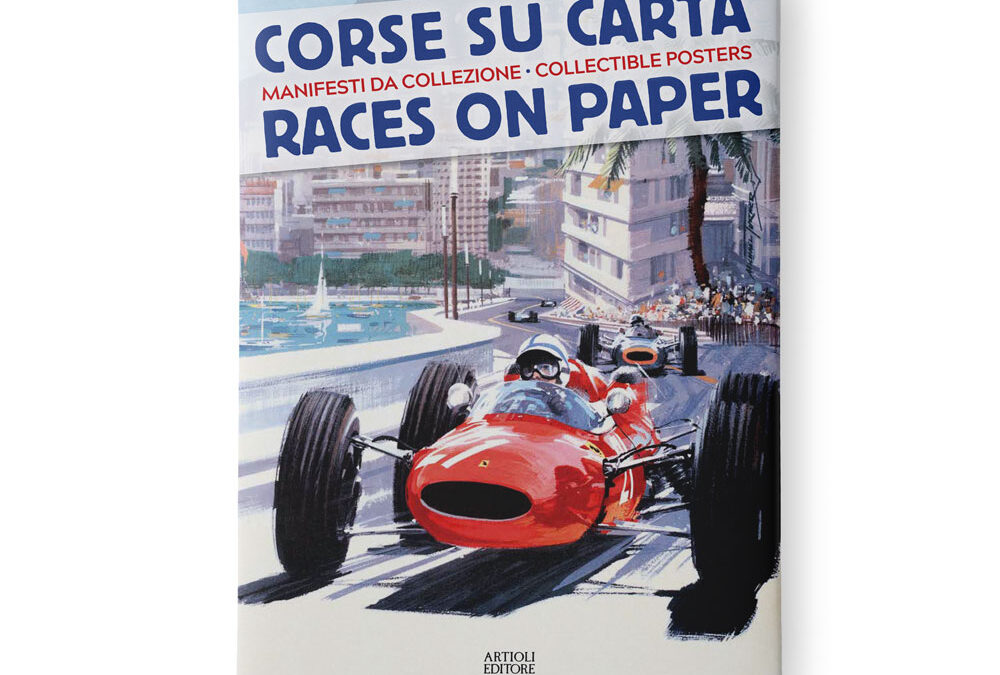
The golden age of posters linked to car racing starts with the early days of motorsport and ends with the beginning of the 1980s, when the evocative power of the image was replaced by other requirements. A photograph of a real car began to occupy the space previously provided by a sketch, inserted in a graphic that most of the time was of great effect.
Often the sketches were commissioned to famous artists and the manifesto acquired the connotations of a masterpiece. The races of the 1920s and 1930s are noteworthy, characterized by the realistic style of the Twenties, but those of races in the 1950s and 1960s, such as the Formula 1 Monaco Grand Prix series, are equally impressive.
Divided according to the characteristics of the races mentioned (pre-F1 World Championship Grands Prix, titled Grand Prix races, post-1950 Grands Prix but not valid for the World Championship, Sport-Prototypes, Mille Miglia and other road competitions), the posters chosen are a true rarity and span over 70 years of motorsport history. They have been chosen from the precious collection of the enthusiast Lauro Malavolti, famous all over the world.

Originally published in 1964, Bruce McLaren’s autobiography From the Cockpit is a classic motor racing memoir. So scarce and expensive are original copies that Evro Publishing, in collaboration with McLaren, is reissuing a facsimile version for all fans to enjoy. In his own words, Bruce describes his inspiring climb up the ladder of motor racing success, culminating in the inception of Bruce McLaren Motor Racing Ltd in 1963. Engaging to read, his book provides fascinating insight into not only his accomplishments but also his unique character, charm and tenacity. In his own words, ‘Life is measured in achievement, not in years alone.’
Overcoming childhood illness: a rare disease stopped Bruce walking for two years and meant long spells in hospital.
Early competition in New Zealand with a modified Austin Seven.
The recipient of New Zealand’s first ‘;Driver to Europe’ scheme, his results in his first season away from home included fifth place in the 1958 German Grand Prix with a works Cooper.
McLaren became the youngest Grand Prix winner in the 1959 United States GP for Cooper, as team-mate to Jack Brabham in the year the Australian won his first World Championship title.
The ups and downs of his life in Formula 1 up to the end of 1963, from winning at Monaco in 1962 to crashing at the Nurburgring and ending up in hospital – where the idea for this book was born.
The story concludes with the formation of his own team, initially to run modified Cooper chassis, and Bruce’s emotional victory in the 1964 New Zealand Grand Prix.

Whether it’s a new Formula One V10 wailing at almost 20,000rpm or the metallic howl of a classic V12, there is nothing on earth like the sound of a racing car at full speed – and if it’s a bright red Ferrari screaming by flat-out, then so much the better.
“Red Noise” has been produced by broadcast audio specialists to bring those sounds right into your living room, your car or your stereo headphones. It utilises incredible recordings made in areas that the general public can never hope to reach….with microphones mounted on the trackside guard rails, and even from right inside the famous Monaco tunnel!
Listen to the sounds of Ferraris, Maseratis and Alfa Romeos spanning more than 75 years of motor racing history and featuring the world’s most famous Grand Prix cars.
This is a genuinely unique aural experience, so push the ‘play’ button, close your eyes and let your imagination and “Red Noise” take you right to the trackside.
Ferraris – Old and New1. See Red, Hear Red! The Vintage Sports Car Club stages an annual meeting at Donington Park that is themed around Italian racing cars. ‘See Red’ is the name of the VSCC meeting and we went there to give you the chance to ‘Hear Red’ ! First there’s the harsh engine notes of a 1980 Ferrari 312T5 ‘flat-12’ (a car actually driven by Gilles Villeneuve!) This is followed by an ex-Michael Schumacher team car from 2002 which we hear idling, picking up the revs, warming up, then finally pulling out of the pits with that distinctive V10 howl.
2. Monaco Ferrari Parade There was a fantastic gathering of Ferraris at the Monaco Historic Grand Prix in 2004. We were there to record all those incredible sounds! Cars ranged from the very first Type 125 1500cc supercharged GP car as driven by Alberto Ascari to a 21st-century Schumacher V10. In fact, there were no less than five vee-tens on hand – two Eddie Irvine cars from 1997 and three Schumacher cars from 1998/99 and 2000.
3. Picking up the Pace More from La Piscine as the real demonstration got under way and the cars picked up to racing speeds. No wonder the Italian commentator was getting excited!
4. Old and New in Action Old and new cars take La Piscine en masse. The field includes both four-cylinder and V12 cars from the ‘fifties, a 3-litre Type 312 V12 from 1968 and no less than seven Type 312 flat-twelve ‘boxer’ engine cars. From more recent times there were V12s as driven by Michele Alboreto in 1987, Nigel Mansell in 1990 and Alain Prost in 1991. And last, but very far from least, were the five Irvine and Schumacher vee-tens! They all mean music to the ears of the ‘Ferraristi’….
5. More from Monaco More ‘red noise’ from the Monaco 2004 Ferrari tribute high-speed demonstration laps. Similar to the previous tracks but too good to waste – especially as we were recording with microphones actually right on the Monaco trackside guard rails!
6. Flat-Out Red! And now for a change of recording point – here are Ferraris- old and new – passing at speed on the Monaco start/finish straight.
7. Generations Apart A 1999 ex-Schumacher Ferrari V10 takes La Piscine in conjunction with a rear-engined Ferrari 246 ‘Dino’ V6 that Italy’s Lorenzo Bandini took to second place here at Monaco in 1966. Then comes a 2.5 litre Ferrari Type 625 – the car that Frenchman, Maurice Trintignant, won Monaco with in 1955. The old front-engined ‘four’ takes La Piscine in conjunction with another modern Ferrari V10.
8. The Ferrari Type 312 V12 Sit back and listen to the first Ferrari Type 312 warming up and blasting through the Monaco tunnel.
9. Jackie Ickx Remembers Belgian Grand Prix and Le Mans star, Jackie Ickx, was a young Ferrari driver in the early nineteen-seventies. He remembers those times for us and tells us what it was like to race at Monaco back then.
10. Flat-Twelve Ferraris Not until Ferrari re-designed its 3-litre V12 did they start scoring World Championship successes again. It powered Niki Lauda to world titles in 1975 and 1977, as well as Jody Scheckter in 1979. The engine had a distinctly harsh note. We hear it warming up at Monaco, then making several echoing passes through the Monaco tunnel and, finally, negotiating the La Piscine sequence of tight turns.
11. The ‘Other Flat-Twelve’ There was another ‘flat-twelve’ built in Italy during the seventies, this one by the Alfa Romeo team in Milan. This is what that car would have sounded like back then, warming up and then blasting off, flat-out.
12. The Last F1 Vee-Twelves Ferrari stuck with V12 engine power right through the mid-nineties with Frenchman, Jean Alesi and Austria’s Gerhardt Berger driving the Type 412 team cars until the end of the 1995 season. By then, it was obvious that the V10 layout was definitely the most efficient of all of the Formula One options. Even so, the heavier, longer V12 took the 412 to a number of GP wins – and it sounded great in the process!
13. Into the 21st Century This is the unmistakable sound of V10-powered Ferraris howling by our microphones on the trackside barriers. First we hear some individual passes, then a whole group of vee-tens finish the track. These are all cars driven by either Michael Schumacher or Eddie Irvine between 1997 and 2000.
Maserati from Modena
14. Vintage Red Maserati is one of the oldest names in motorsport. Listen to a couple of vintage Maserati racers warming up – a four-cylinder 4CLM from 1939 and a six-cylinder 6CM from the 1937 season. These supercharged 1500cc cars would have raced in the ‘voiturette’ class – the nineteen-thirties equivalent of the Formula Two (or GP2) category.
15. A Fifties Favourite The six-cylinder Maserati 250F was one of the favourite 2.5 litre Formula One cars of the fifties – both with the fans and with its drivers. Listen to a group of them fire up, pull out of pits and then pass by on a flying lap.
16. Maseratis En Masse! A full field of twenty cars in a ‘Maserati-only’ race at the Vintage Sports Car Club’s ‘See Red’ event at Donington Park. They range from pre-war four, six and eight-cylinder supercharged cars to a whole pack of what is one of the most-admired Grand Prix cars of all time, the six-cylinder Maserati 250F. Hear them on the parade lap, and in race action through Redgate Corner.
17. Maserati at Monaco The throaty sound of a six-cylinder Maserati 250F as it warms up, followed by the rumble and the roar of a full field of ‘fifties Formula One cars on their warm-up lap.
18. Monaco Shark Hunt! The three-pronged trident is famous as the weapon of Neptune, or Poseidon – the God of the Sea and it has also always been the emblem of Maserati. So it’s perhaps appropriate that we hear a pack of 250F Maseratis chasing a Ferrari Type 555 ‘Squalo’ – or ‘Shark’ through the tight left-hander before Monaco’s Rascasse hairpin.
19. GP Rivals Warm Up A Bugatti Type 35 warms up in the Monaco pits. It carries the racing blue of France where the cars were built. Then an Alfa Romeo P3 is push-started into life and joins the mechanical chorus.
20. Right on the Rail! A full field of more than thirty great cars of ‘the golden age’ rumble around on a warm-up lap, take the start and attack the opening laps of a race around the Monaco streets. You are right up with the action thanks to our stereo microphones positioned right on the trackside safety barriers.
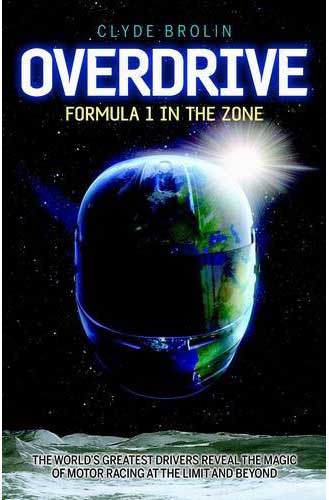
Listed in the Daily Telegraph’s top ten sports books of 2010, Overdrive draws on exclusive interviews with 100 of the world’s quickest men – from Stirling Moss through to Sebastian Vettel, Fernando Alonso, Michael Schumacher and Lewis Hamilton – to reveal the magic of motor racing at the limit and beyond. Ayrton Senna once famously crushed the F1 field at Monaco while in an apparent trance, an experience that led him to a spiritual rebirth. Overdrive reveals the grand prix greats have all shared aspects of Senna’s epiphany at their finest hours. To ride on a thousand screaming horses may seem an unlikely source of inner peace but life at 200mph can lead to surreal effects from slow motion to journeys out of the body. Stars of other sports confirm this mystical ‘Zone’ is accessible in any field but in motor racing only the masters tame it, bending time and space as they speed to Earthly laps of the gods. Overdrive is the first book to look deep inside their crash helmets and tell the story of how they do it. Damien Smith (Motor Sport) ‘Brolin risked being laughed at when asking drivers including Alonso, Schumacher and Hamilton if they have experienced out-of-body sensations. Instead, they were happy to oblige. The most original motor racing book of 2010? Without a doubt.’ Simon Briggs (Daily Telegraph) ‘The product of ten years labour, Overdrive is insightful and leaves you with a fresh perspective on F1 – exactly what Senna experienced in Monaco all those years ago.’ Julie Gueguen (FOFA) ‘Far from alpha males fighting it out, Overdrive pictures racers as profoundly human, sometimes mystical men. All agree the perfect lap justifies the years of sacrifice. Not the champagne…’ Laurence Edmondson (ESPNF1) ‘Overdrive leaves you looking at sport’s greatest achievements in a different light. The content is incredibly fresh and brilliant descriptions include darts player Bobby George: ‘Like a thousand starlings flying out of your a*******…’ Dan Cross (Motorsport Musings) ‘Fascinating as it is thought-provoking, Overdrive is no ordinary sports book. It has clearly been a labour of love for the author and his passion for the subject shines through on every page.’
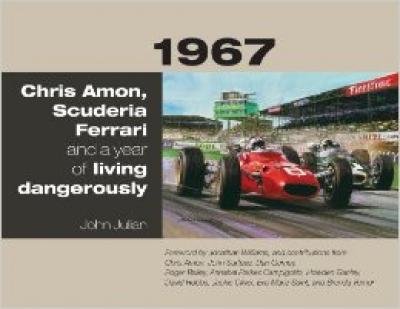
“1967 was a milestone year in motor racing. For Ferrari, the season started with sports-car victories at Daytona and Monza, but soon turned tragic with the death of Lorenzo Bandini after an accident at the Monaco Grand Prix. At Spa, another spectacular accident put Mike Parkes out of action with two broken legs, and prompted Ludovico Scarfiotti to quit the Ferrari team. That left Chris Amon, a 23- year old New Zealander in his first year with the Italian team, to fight on alone until the year’s last race in Mexico. He would finished fourth in the F1 Drivers Championship after reaching the podium four times.
While Amon and Ferrari take center stage, 1967 also looks at the other drivers, teams, and events that shaped the campaign for the championship. The book includes observations and memories from such leading drivers as John Surtees and Dan Gurney, as well as informed insiders like Amon’s countryman Howden Ganley, Enzo Ferrari’s assistant Brenda Vernor, and Grand Prix star Eva Marie Saint. It also goes beyond Amon’s time with Ferrari, covering both his early years with the Cooper and Parnell teams, his 1966 victory at Le Mans with Bruce McLaren, and his later career with March and Matra.
Amon worked closely with author John Julian to explain exactly what it was like to compete at the highest level during a unique moment in motorsports history, and his first-hand recollections give the book a very personal quality. Julian’s vibrant prose and extended quotes from key characters make 1967 a fast-paced read, with a wealth of photographs adding atmosphere and excitement. And while the book includes enough detail to satisfy the most serious fan, it also offers a wider view of a bygone era by noting other events in the news, popular songs of the day, and local details about each major race.
”
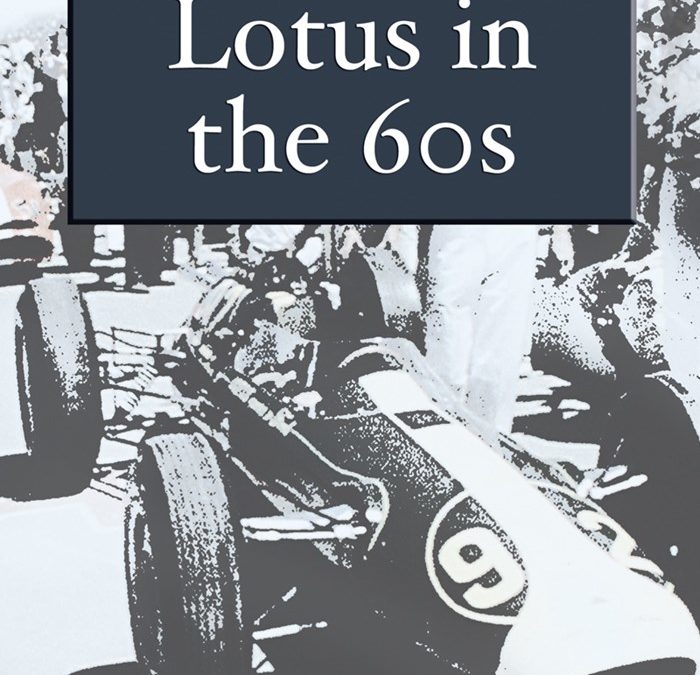
This extraordinary collection of noteworthy films from the Ford archives offers a unique insight into a golden era of motorsport on both sides of the Atlantic.
Lotus in the Sixties charts the groundbreaking relationship between bespoke British racing- and sportscar manufacturer Lotus and the giant Ford Motor Company. The design genius of Colin Chapman allied to the technological know-how of Ford shook up the racing world and changed the face of motorsport forever.
Included on this release, ‘American Revolution’ tells of the arrival of the iconic Ford-powered, rear-engined Lotus which Jim Clark used to take victory at the Indy 500 in 1965, beating the likes of Bobby Unser and Parnelli Jones.
‘First Time Out’ records the birth of a legend; the first race of the Lotus 49 and its revolutionary Ford DFV engine. Spectacular archive footage, shot at the famous Zandvoort Circuit in 1967, shows Jim Clark once more dominating the opposition as he and teammate Graham Hill give the car and engine a perfect debut.
Two years later and the 49, with its Ford powerplant, is still the combination to beat as Graham Hill put his years of experience to use to win his fifth Monaco Grand Prix. The footage here shows off his skill, bravery and determination combined with the power and handling of the Ford/Lotus combination to good effect.
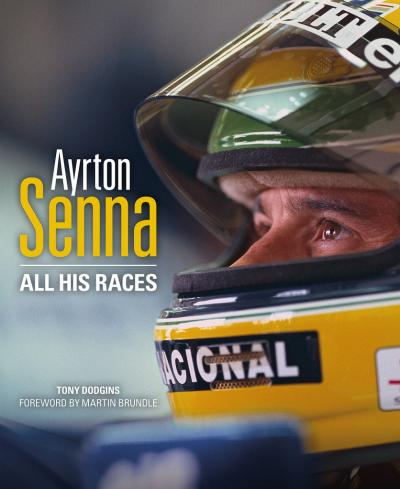
“This definitive record of Ayrton Senna’s racing life provides detailed coverage of every single race in which he competed, including karting, Formula Ford, Formula 3 and Formula 1, in addition to one-off appearances and tests in other categories, such as the World Sports Car Championship and Indy Car. The engaging text features insightful new material drawn from interviews with many of Senna’s rivals and colleagues and is accompanied by a rich array of high-quality period photographs. This lavish book provides a fitting tribute to a Formula 1 legend whose legacy today extends far beyond the world of motor racing.
The fabulous photographs in this book were captured through the lenses of Sutton Images, where brothers Keith and Mark Sutton between them followed Senna’s meteoric career from the very beginning. Their contribution starts with his very first race win and ends with poignant images from Imola ’94.
The karting years: racing in Brazil and South America between 1973 and 1977, and Senna’s efforts to win the elusive karting World Championship between 1978 and 1981.
Formula Ford 1600 and 2000: racing with the Van Diemen works team in 1981, before progressing to FF2000 in 1982, dominating the British and European championships.
Formula 3: the battle with Martin Brundle for the 1983 British F3 Championship.
Formula 1 baptism with Toleman: nearly winning the rain-shortened Monaco Grand Prix, and qualifying third at Estoril, behind Piquet’s Brabham and Prost’s McLaren.
The Lotus years, 1985–87: Senna’s first wins, at Estoril and Spa in 1985, two more wins in 1986, and his final Lotus year, with wins in Monaco and Detroit, before signing for McLaren for the 1988 season.
The McLaren years, 1988–93: first world title in 1988 followed by an acrimonious year with team-mate Alain Prost in 1989.
Two further world titles in 1990 and 1991, as Williams emerges to dominate with Nigel Mansell and Alain Prost, Senna winning five races in his final year for McLaren.
The final season: driving for a no-longer-dominant Williams, struggling to take the fight to Benetton and Michael Schumacher, before tragically losing his life at Imola.
“
Autobooks-Aerobooks 2900 W. Magnolia Blvd. Burbank, CA 91505 (818) 845-0707 Hours: Tuesday-Friday 10:00 AM – 6:00 PM Saturday 10:00 AM – 6:00 PM Closed Sunday and Monday Accept Credit Cards gift cardYES, We have Gift Cards - Click Here AUTOBOOKS IS OPEN...

















